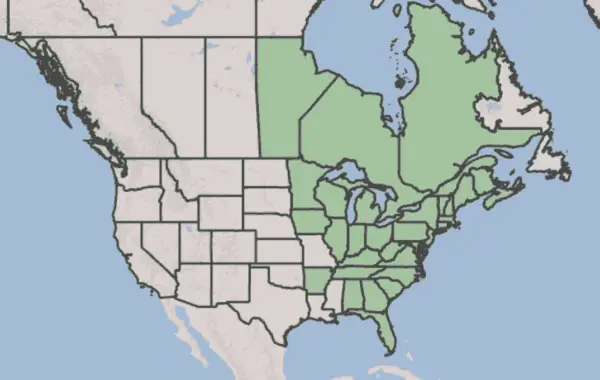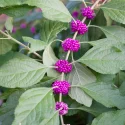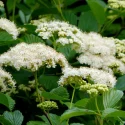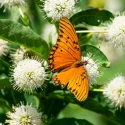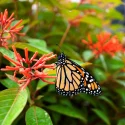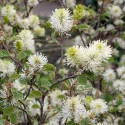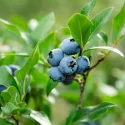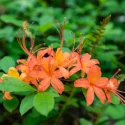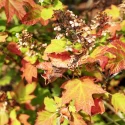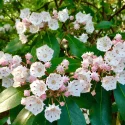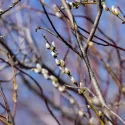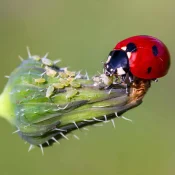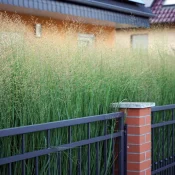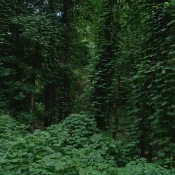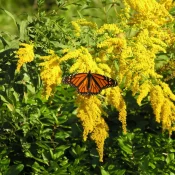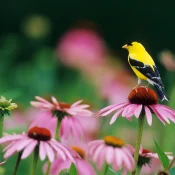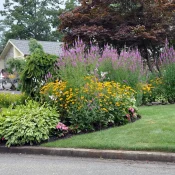Ninebark
Ninebark is named after something rarely mentioned in plants—its bark. Ninebark’s bark peels back to reveal beautiful layers, almost like petals on a rose.
Ninebarks are a true four-season shrub, changing dramatically throughout the year. In the spring, clusters of delicate flowers bloom make pollinators go crazy. In the summer, leaves tumble down long graceful stems. In the fall and winter, blooms become berries for birds, and leaves fall to reveal striking branches. Ninebarks grow fast and like a wide range of light, from shade to full sun. Plant a stunning Ninebark and watch the show.
- Full Sun, Part Sun, Full Shade
- Medium Shrub (6-10')
- Spring flowers
- Bird favorite
Why Ninebark named for its bark and not its gorgeous flowers is a mystery
Ninebark is a gorgeous shrub native to a huge section of North America. It grows extremely fast and returns four seasons of beauty (including both blooms and berries for birds.) In this article, we will explore how Ninebark changes throughout the seasons, tips on how to grow, and introduce a few different species perfect for your garden.
Let’s dig in with a basic question, shall we?
Why is it called Ninebark?
Ninebark’s common name comes from its unique bark, which peels away as it ages revealing layers below, looking almost like petals on a rose. Since there are not nine layers of bark, we can assume it’s called Ninebark for poetic reasons (threebark just doesn’t sound as lovely.) The older the plant is, the more pronounced the peeling becomes.
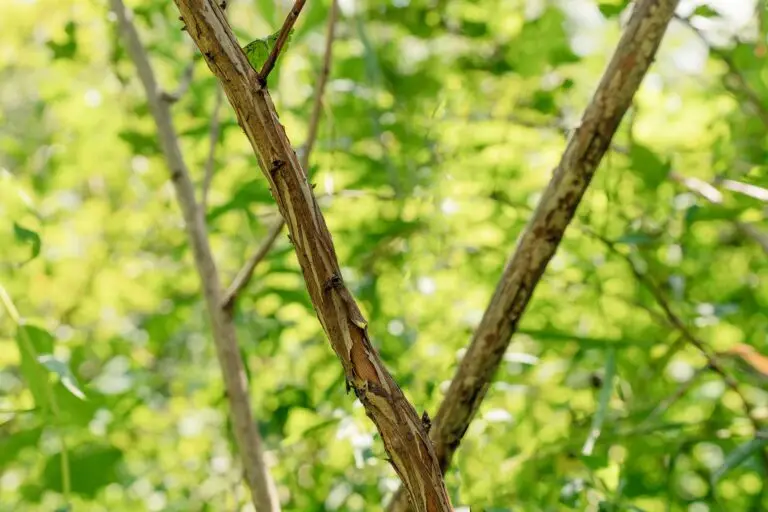
This plant also sometimes goes by the common name Atlantic Ninebark. The Latin name is a huge help when determining whether you’re looking at the right plant (every plant has only one Latin name). This plant’s Latin name is Physocarpus opulifolius. Look at the plant tag when you’re at the nursery to ensure you’ve got the right plant.
Now that we know how to find it let’s talk about why it’s good to plant.
What are the benefits of planting Ninebark?
Ninebark is a native shrub, which means it has grown happily in North America without human assistance for thousands of years. Native plants literally plant themselves, and have lived through every drought, blizzard, and season of their home area. There are no better plants suited for your region than native plants.
Native plants return lots of benefits, too.
Planting native shrubs like Ninebark helps:
- Support wildlife. Ninebark blooms help pollinators, and Ninebark berries help songbirds.
- Return decades of beauty. Ninebarks are long-lasting perennials, which means plant once and enjoy for years and years.
- Deliver fuss-free, drought-friendly gardening. If you think of yourself as a “black thumb” gardener who finds keeping plants alive challenging—native plants are for you. After the first year of getting established, most native plants thrive with just rain.
Ninebark throughout the seasons
Ninebarks change dramatically throughout the seasons in wildly different ways, but look amazing no matter what. (They are the Cate Blanchett of native gardening.)
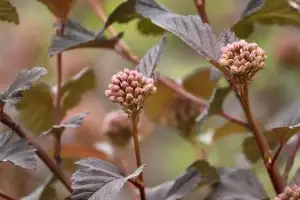
spring
In the early spring, Ninebarks cover their long stems in grape-like leaves and tiny buds. (These are the reddish leaves of a Ninebark cultivar—read on to learn more.)
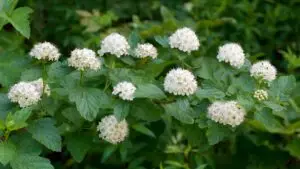
summer
In the early summer, Ninebarks put out delicate clusters of beautiful flowers in tiny, dome-shaped bouquets.
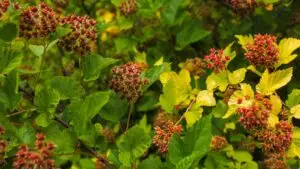
fall
In the fall, the flowers change to tiny fruits, becoming tiny buffets for songbirds.
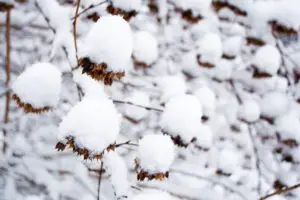
winter
In the winter, the fruits hang like confetti from the arched branches, providing important food for birds in the coldest months. And then they start the show all over again.
Now that we know a little about how Ninebark changes throughout the seasons, let’s meet a few options to plant, starting with the native species.
Native vs. Cultivar Ninebarks
If you want to plant for the maximum value for wildlife, plant true native species. Native species are untouched by humans, unlike cultivars (more on that in a few paragraphs.)
Where is Ninebark native?
Ninebark is native to a wide portion of North America, from Nova Scotia to Florida. If you live in the Northeast, Mid-Atlantic, Midwest, or Southern United States, you can happily plant Ninebark.
If you’re looking to plant something that either looks or behaves a certain way, Ninebarks have been cultivated for decades to offer many different options. These are called Ninebark cultivars or Ninebark nativars.
Ninebark Cultivars
Ninebark has many cultivar options with different-colored leaves and flowers. Cultivars are plants created by humans to offer something a true native plant doesn’t, like different colors, heights, or drought tolerance. Many native species have been cultivated to offer many different options. Other cultivar favorites include coneflowers and Alum Root (Heuchera).
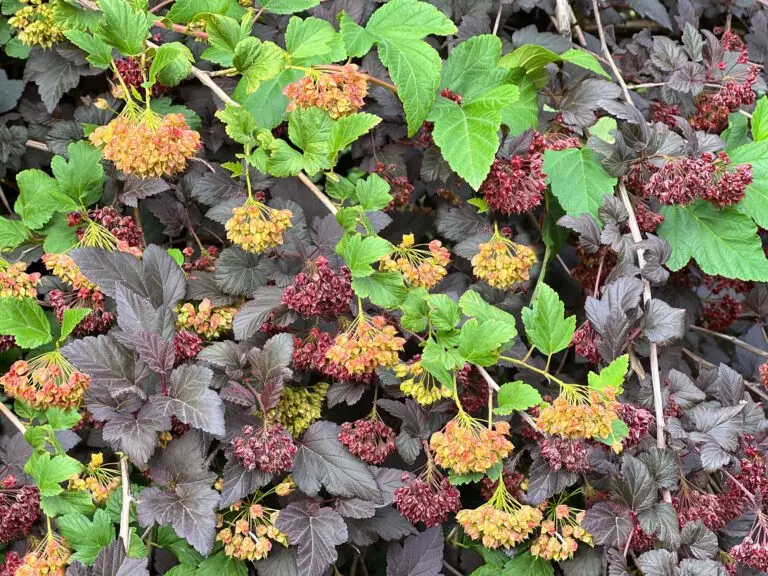
Native vs. cultivar—which is better?
Although cultivars offer variety, nothing beats a true native plant when it comes to offering food and habitat for birds and pollinators. The Plant Native recommends planting true natives when possible.
That said, cultivars are always better than non-natives. If you fall in love with a cultivar…plant what you love. Some popular Ninebark cultivars include:
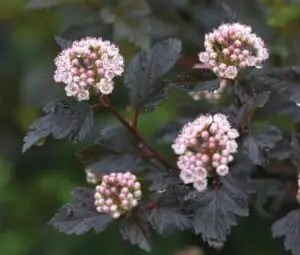
Ninebark 'Summer wine'
Physocarpus opulifolius ‘Summer wine’
‘Summer Wine’ has dark purple leaves with hints of cabernet red, alongside light pink flowers.
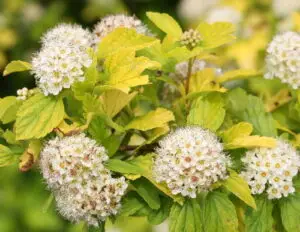
Ninebark 'Festivus Gold'
Physocarpus opulifolius ‘Festivus Gold’
Ninebark “Festivus Gold” is strangely named for a Seinfeld holiday (?) and has neon-green leaves and bright white flowers.
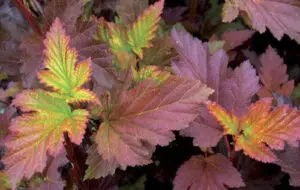
Ninebark 'Center Glow'
Physocarpus opulifolius ‘Center Glow’
Ninebark “Center Glow” is aptly named for the way color spreads from the center of its leaves to the leaf edges.
Native vs. Cultivar
Plant true native plants whenever possible. Cultivars (short for CULTivated VARieties) are selected by humans and often do not offer the same benefits to bugs, birds, and animals that native plants do.
Now that we’ve met some Ninebark options, let’s talk about how easy these shrubs are to plant and grow.
How to grow Ninebark
Ninebark is so easy to grow because they like a large variety of sun and water. Whether it’s part sun, full sun, wet, or dry—Ninebarks will thrive. They grow very fast as well. Their long branches grow quickly over the spring and summer growing period.
- Ninebark are perennials, so they will come back year after year. Once you plant them and they are happily established, you can enjoy them in your yard for years.
- Ninebarks like a wide range of sun. Sunny, part sun, and part shade are all great for Ninebarks.
- Ninebark likes a wide range of water conditions. Whether you plant them in drier soils or wetter areas, ninebark will thrive. They are a very easy plant to grow.
Grow Ninebark from plants
It’s easy to grow Ninebark and it’s also very easy to find ninebark plants at your local nursery or plant sales. Ninebarks are relatively easy to find, compared to other native shrubs. Even Lowes or Home Depot have at times carried Ninebark—although we highly recommend buying from local nurseries. Local nurseries have better Ninebark selections (more kinds! more sizes! more healthy!) than any big-box store.
Here are four reliable ways to find Ninebark plants:
Where can I find seeds and plants?
Finding native plants can be challenging (we partly blame Marie Antoinette.) To make it easier, we’ve assembled four sourcing ideas.
Native Nursery List
300+ native nurseries makes finding one a breeze
Online Native Plant Sellers
We've included 100+ online resources to help
Society Plant Sales
Every state has a native plant society; find yours
Online Communities
Local Facebook groups are a great plant source
What to plant with Ninebark
Ninebark is an understory shrub—or a shrub that likes to live snuggled underneath larger trees. Because of its preferred home, it’s lovely beside other plants that like shade or part shade, including Heuchera, Mountain Laurel, Golden Alexander, and native rhododendrons.
We hope this guide to Ninebark inspired you to plant a few. Ninebarks are extremely easy to plant, fast growers and will come back year after year looking amazing. The native variety offers the maximum wildlife support, while fun cultivar versions offer different colors and sizes. Happy planting!
Sources
- Missouri Botanical Garden, Physocarpus opulifolius.
- USDA Plants Database, Common Ninebark.
